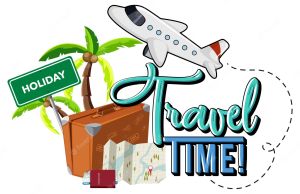
Tour Guiding Techniques: A Comprehensive Description
Tour guiding techniques refer to the skills, methods, and strategies used by tour guides to provide informative, engaging, and memorable experiences for tourists. A professional tour guide is responsible for ensuring that visitors not only gain knowledge about a destination but also enjoy a smooth and well-organized trip. Effective tour guiding requires a combination of communication, storytelling, crowd management, and problem-solving abilities.
Key Tour Guiding Techniques
-
Preparation and Planning
-
A successful tour begins with proper preparation. The guide must research the destination’s history, culture, and attractions to provide accurate and insightful information.
-
Planning includes mapping out routes, estimating time schedules, and ensuring safety measures are in place.
-
-
Effective Communication
-
Clear and confident speech is essential to ensure tourists understand the information.
-
The guide should use simple and engaging language while adjusting their tone and pace based on the audience.
-
Active listening and responding to tourists' questions improve engagement.
-
-
Storytelling and Interpretation
-
Instead of just listing facts, guides use storytelling to make historical or cultural information more exciting and memorable.
-
Personal anecdotes, humor, and interactive discussions help maintain tourist interest.
-
-
Customer Engagement and Interaction
-
Making tourists feel welcome and valued enhances their experience.
-
Encouraging participation through questions, discussions, or hands-on experiences ensures a more immersive tour.
-
-
Time Management
-
A tour guide must manage time effectively, ensuring that all stops on the itinerary are covered while maintaining a comfortable pace.
-
Keeping track of the group and setting clear meeting points prevents delays.
-
-
Safety and Crisis Management
-
Ensuring the safety of tourists is a priority. Guides should be familiar with emergency procedures, first aid, and local authorities’ contacts.
-
Handling unexpected situations like lost tourists, bad weather, or medical emergencies calmly and professionally is essential.
-
-
Cultural Sensitivity and Ethics
-
Respecting the customs and traditions of the destination is crucial. A guide should educate tourists on proper behavior in sacred or culturally sensitive areas.
-
Promoting responsible tourism, such as respecting the environment and local communities, is part of ethical guiding.
-
-
Group Management
-
Managing a group requires patience and leadership. Guides must keep the group together, especially in crowded places.
-
Using signals, identifying markers, or designated meeting points ensures that no one gets lost.
-
-
Use of Technology
-
Modern tour guiding incorporates technology such as audio guides, mobile apps, and virtual tours.
-
Microphones and portable speakers can help communicate with large groups effectively.
-
-
Adaptability and Problem-Solving
-
Every tour is different, and unforeseen circumstances may arise. A good guide remains flexible, adjusting the tour based on tourist interests, weather changes, or unexpected closures.
-
Being able to solve problems quickly while maintaining a positive attitude ensures a smooth experience.
Conclusion
Tour guiding techniques are essential for creating enjoyable and educational experiences for tourists. A skilled tour guide combines knowledge, storytelling, communication, and management skills to make the tour engaging and safe. By mastering these techniques, tour guides can leave a lasting impression on visitors and promote responsible tourism.
- Teacher: Admin User
